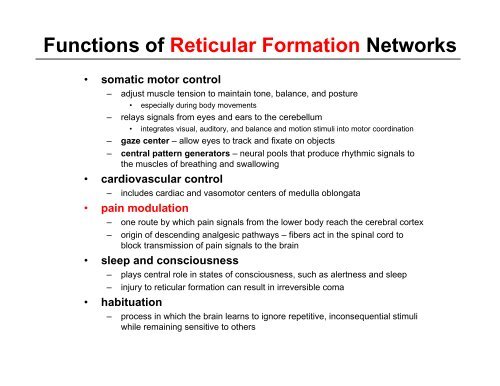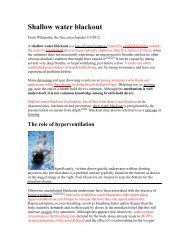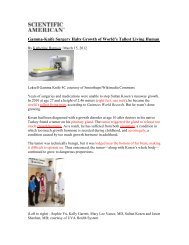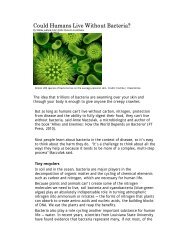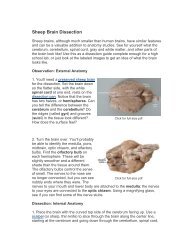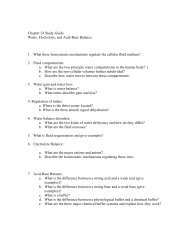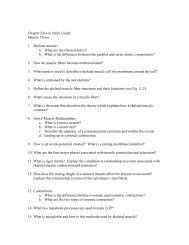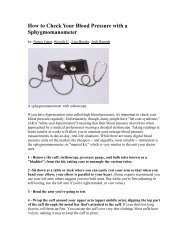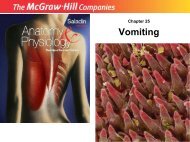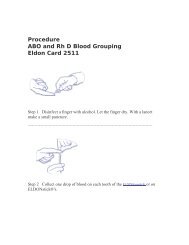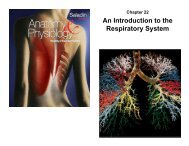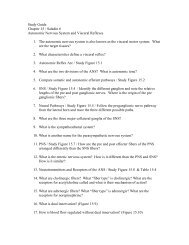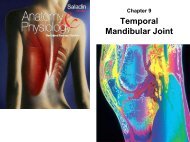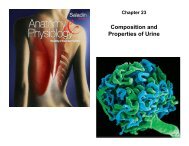The Brain Stem
Chapter 14 The Brain Stem
Chapter 14 The Brain Stem
- No tags were found...
Create successful ePaper yourself
Turn your PDF publications into a flip-book with our unique Google optimized e-Paper software.
Functions of Reticular Formation Networks<br />
• somatic motor control<br />
– adjust muscle tension to maintain tone, balance, and posture<br />
• especially during body movements<br />
– relays signals from eyes and ears to the cerebellum<br />
• integrates visual, auditory, and balance and motion stimuli into motor coordination<br />
– gaze center – allow eyes to track and fixate on objects<br />
– central pattern generators – neural pools that produce rhythmic signals to<br />
the muscles of breathing and swallowing<br />
• cardiovascular control<br />
– includes cardiac and vasomotor centers of medulla oblongata<br />
• pain modulation<br />
– one route by which pain signals from the lower body reach the cerebral cortex<br />
– origin of descending analgesic pathways – fibers act in the spinal cord to<br />
block transmission of pain signals to the brain<br />
• sleep and consciousness<br />
– plays central role in states of consciousness, such as alertness and sleep<br />
– injury to reticular formation can result in irreversible coma<br />
• habituation<br />
– process in which the brain learns to ignore repetitive, inconsequential stimuli<br />
while remaining sensitive to others


